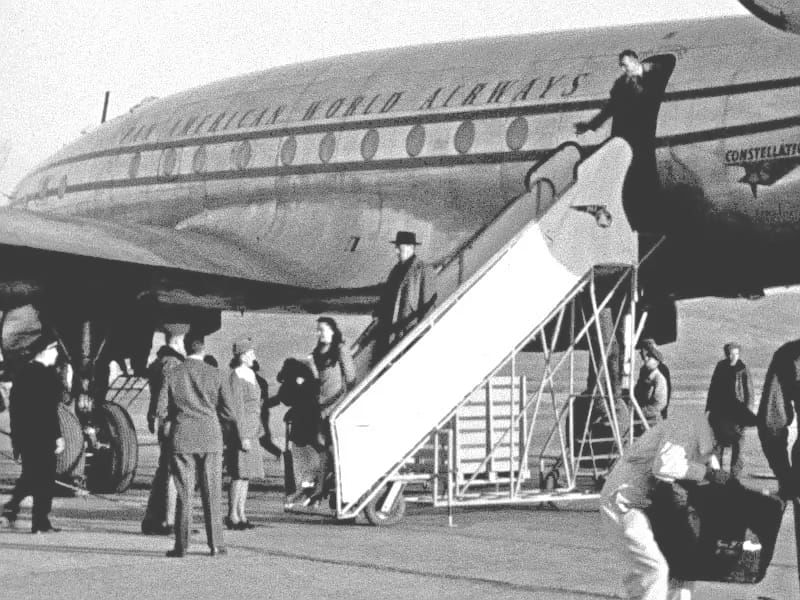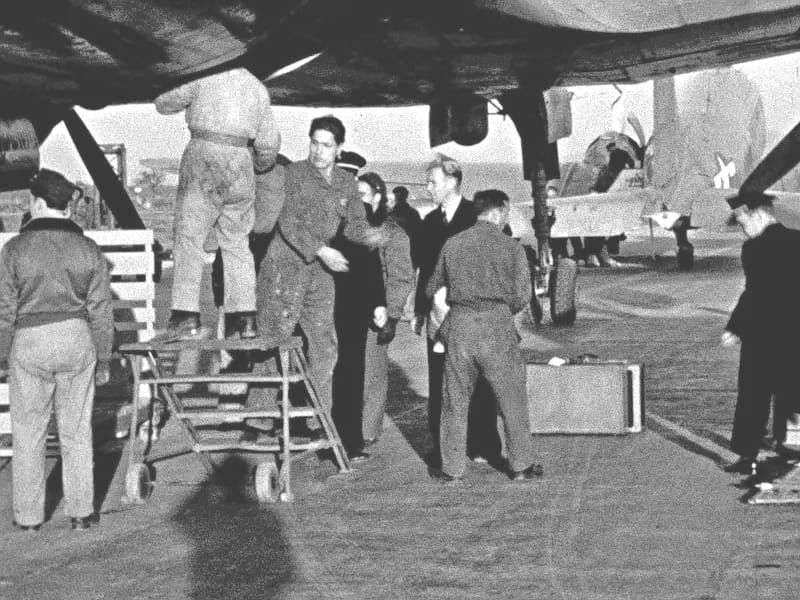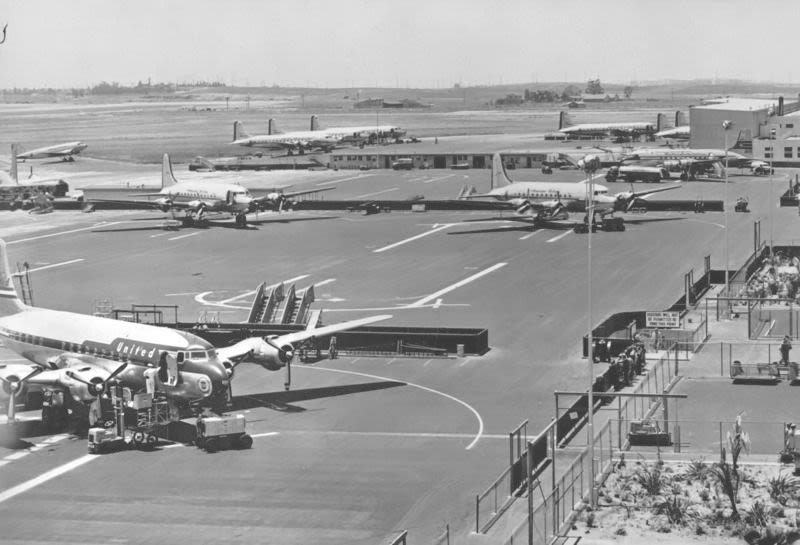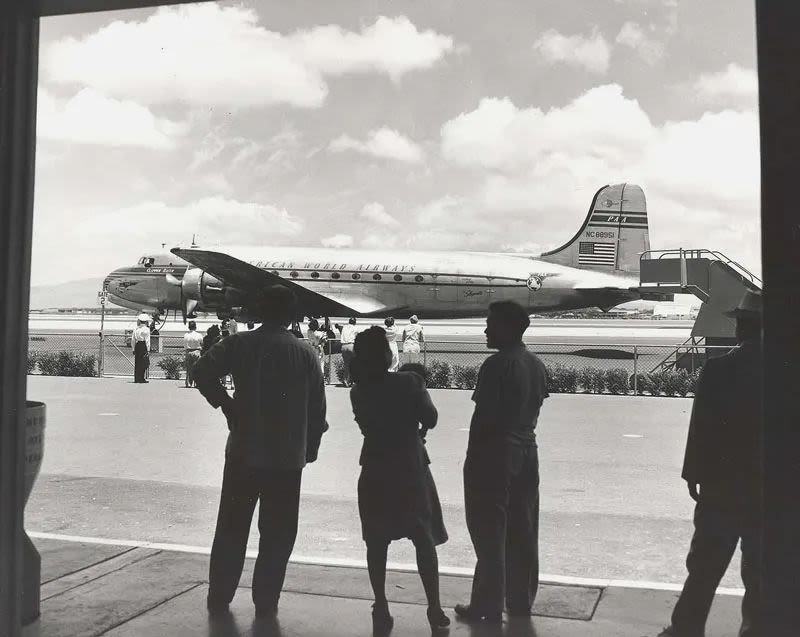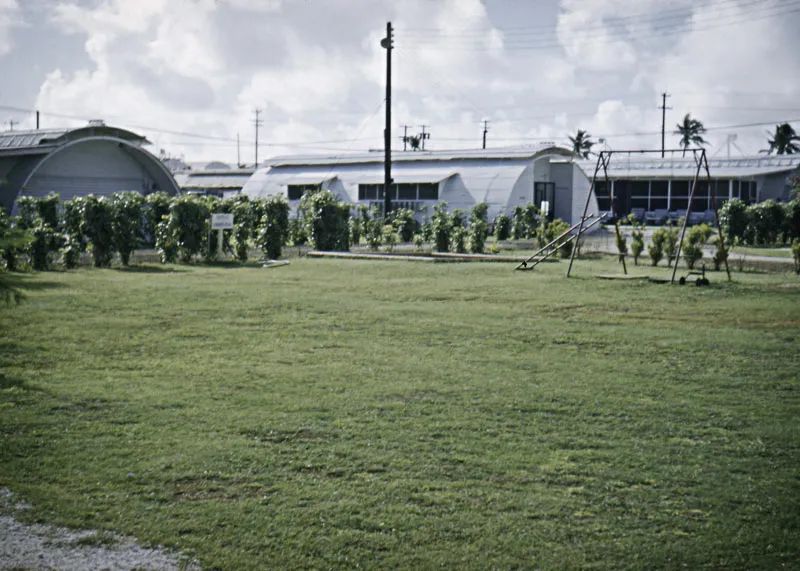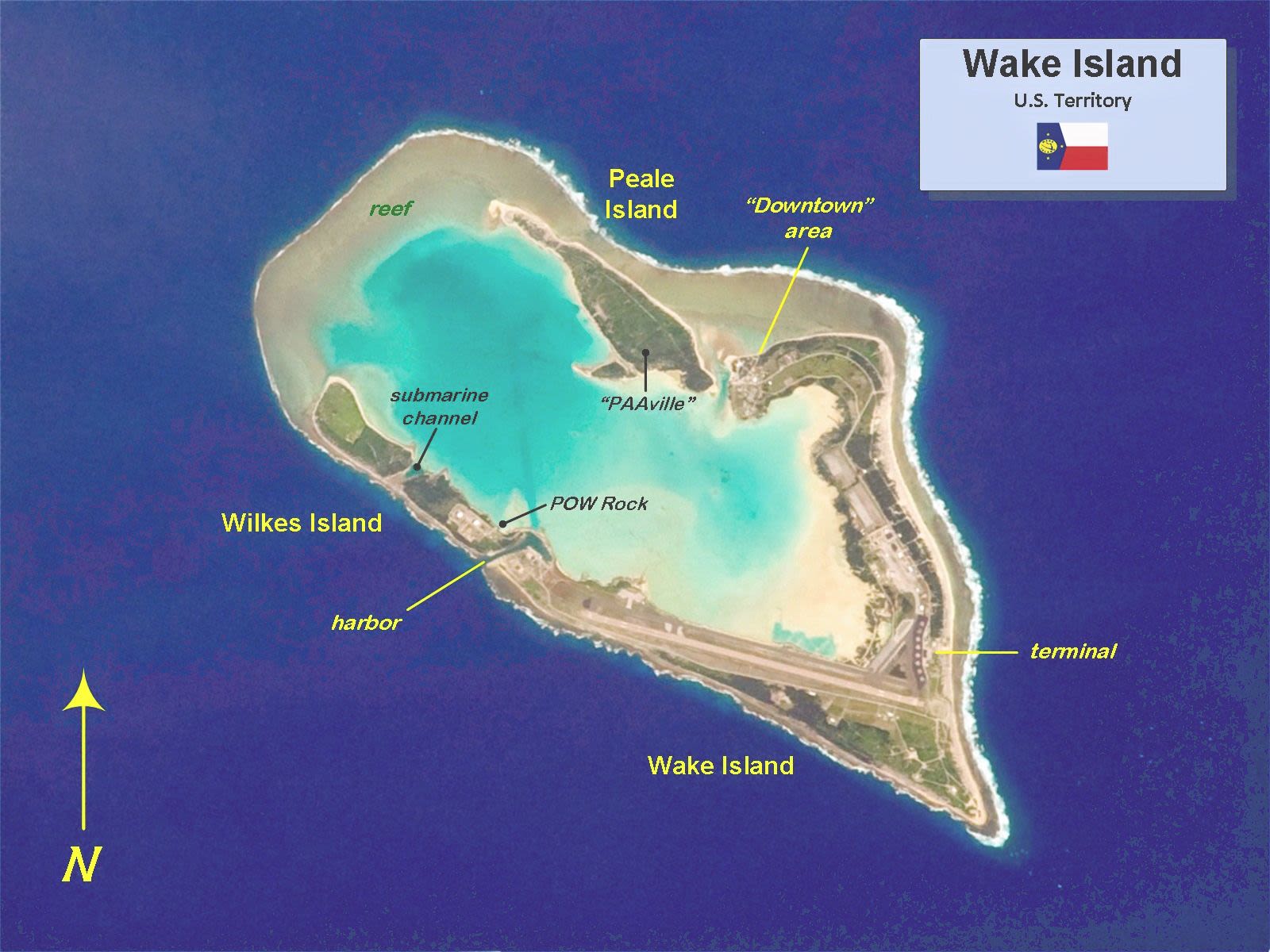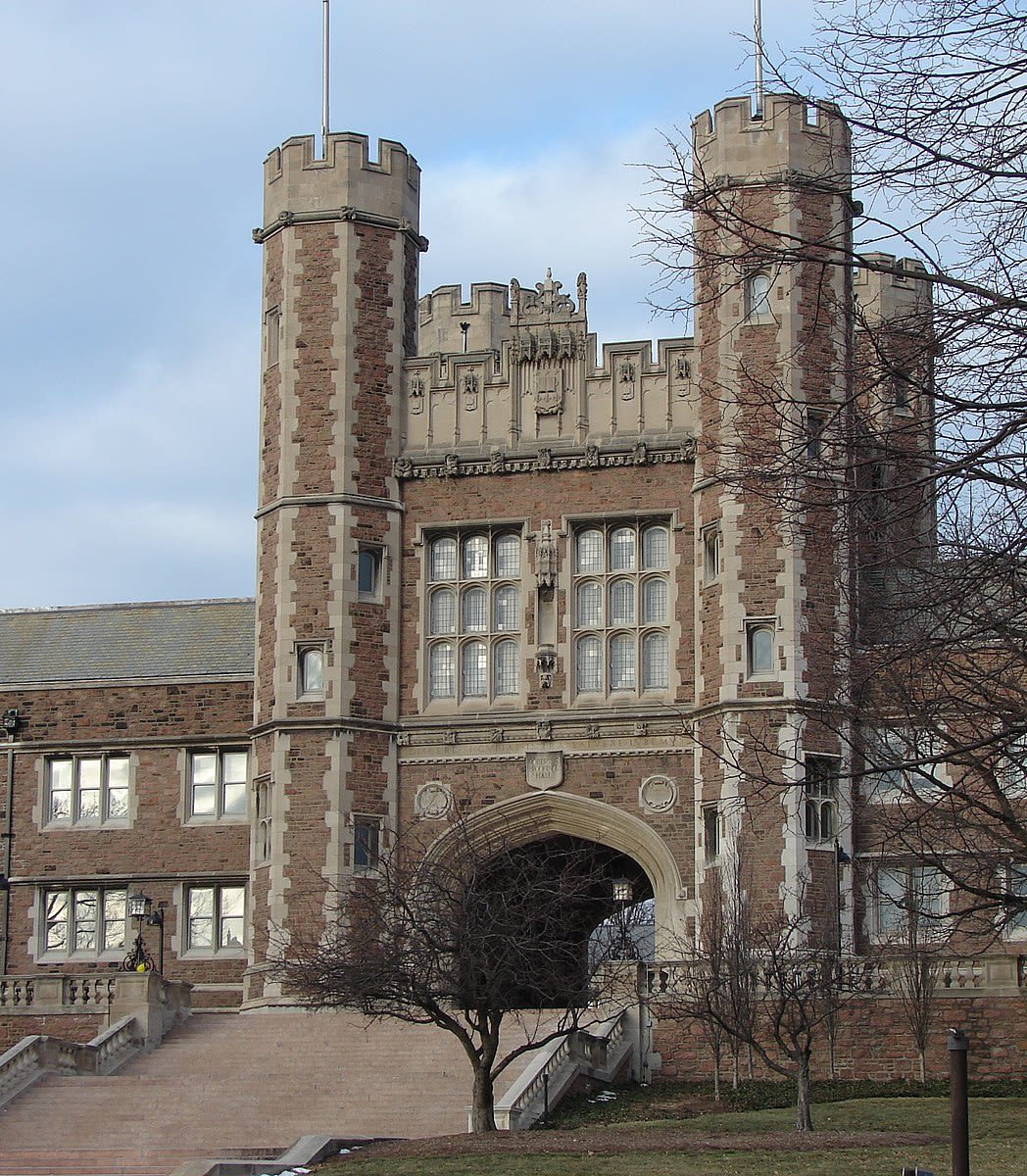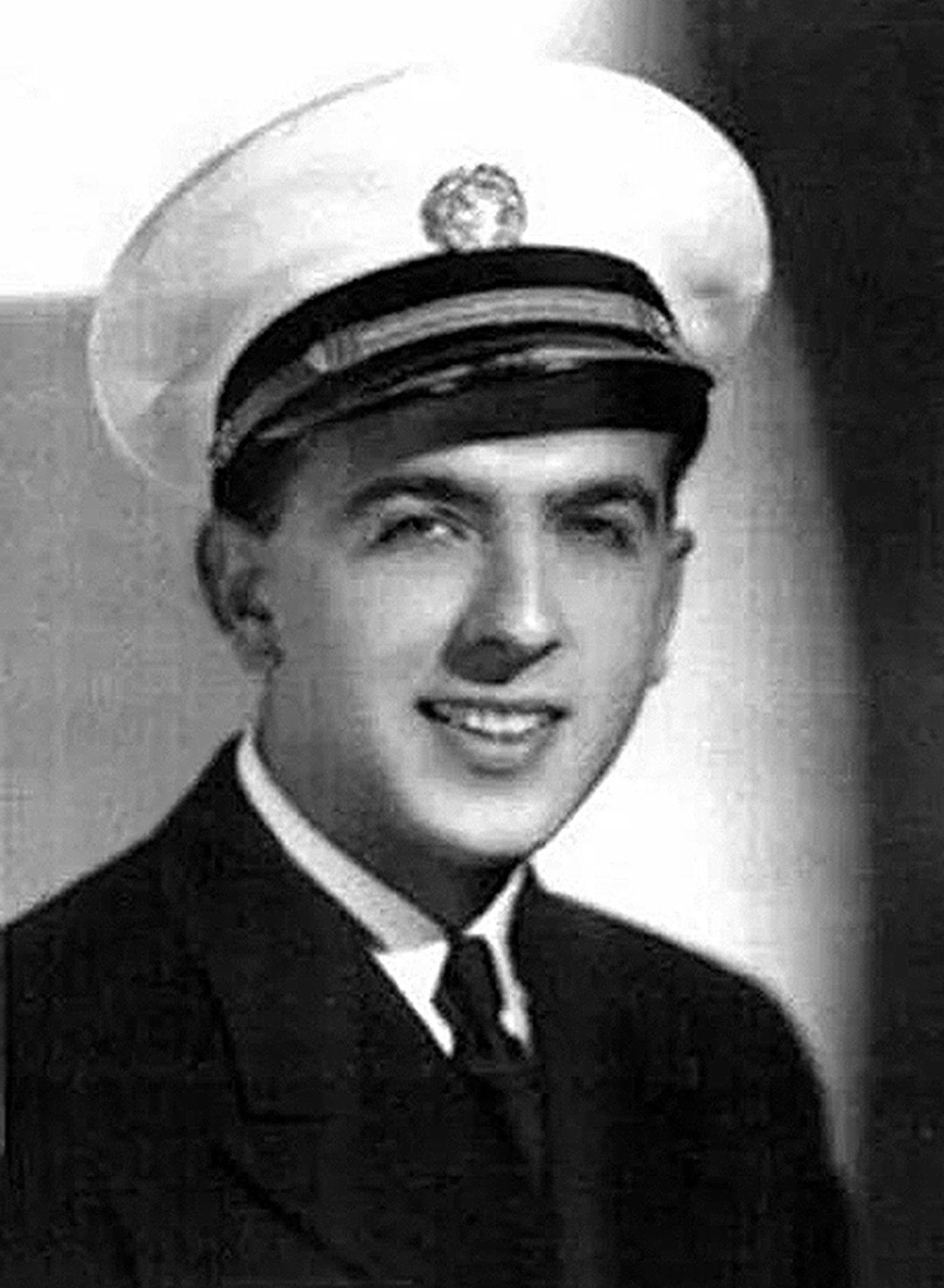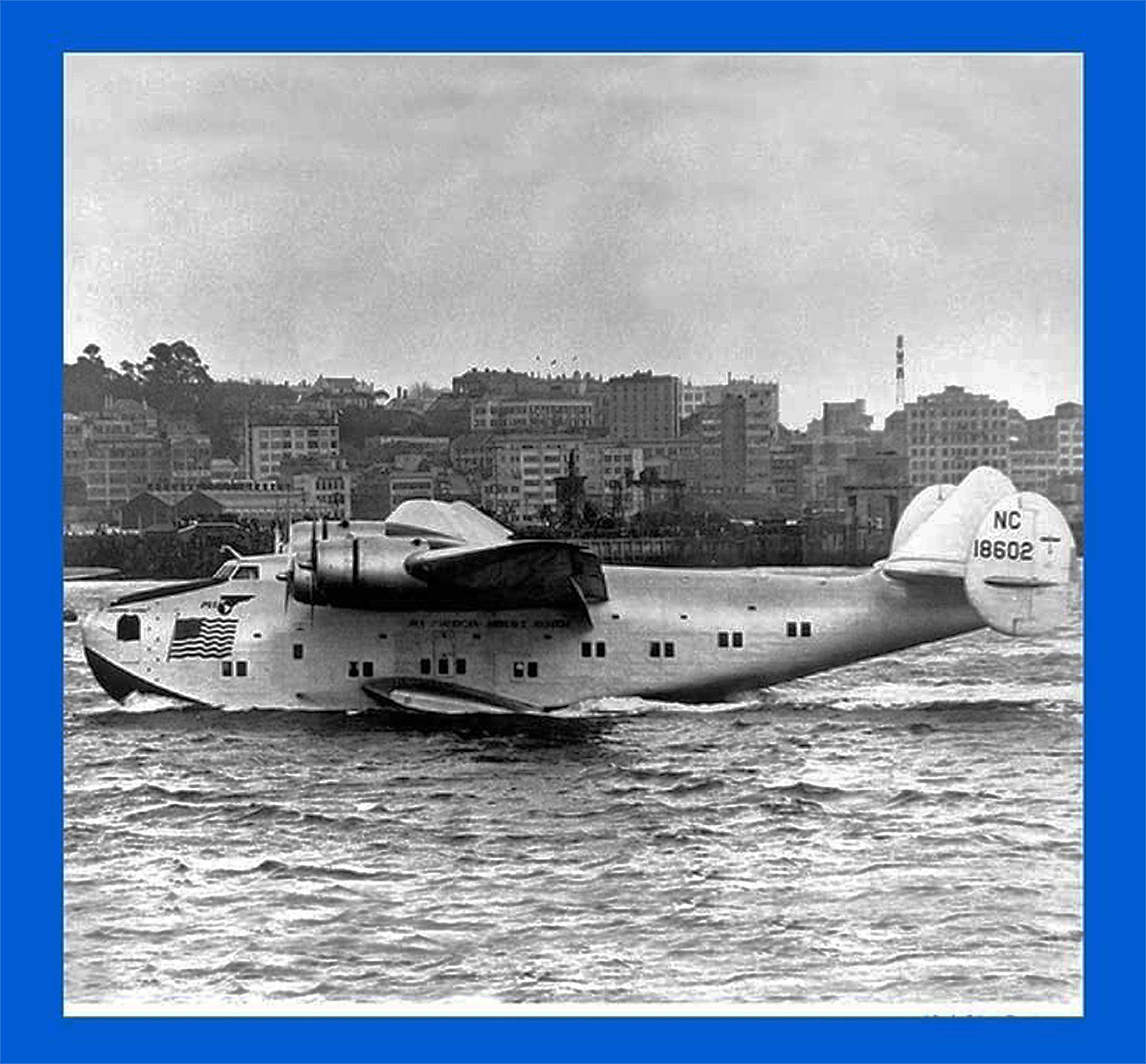B-314 MEMORIES
Part Two

In this section, Ed continues his work as a Pan Am Flight Radio Officer, and we pick up at the point where he has been assigned to set up Pan Am’s radio communications at their new base in Austria.
Post War
The end of the war brought an end to the military war contracts. Pan Am began the transition from a wartime operation to a civilian airline. They began planning for all the overseas locations they would be flying to in the post- war period. One of these was Vienna, Austria. As the ATC contracts were coming to an end. Pan Am assigned various personnel to travel to their overseas assignments to begin the process of establishing commercial airline facilities, including communications. I volunteered to take the job of setting up communications facilities at Vienna.
It was January, 1946 when I arrived at the Tulln, Austria airbase, (a former Luftwaffe airbase during the war, but now operated by the U.S. Army Air Corps). It was located in the middle of the Russian-occupied area of Austria, just west of Vienna proper.
We had to drive along a very narrow, rutty country road to get from the airbase into downtown Vienna where the city itself was divided into American, British, French and Russian sectors. There was a better paved road that was shorter but the Russians were always obstructing our access to that road so we had to use the longer, slower route. That made it about an hour drive from the base into town.
Clipper Intrepid arrives at Tulln Airport, Vienna. Photo courtesy of Ed Dover.
Clipper Intrepid arrives at Tulln Airport, Vienna. Photo courtesy of Ed Dover.
Recreational facilities (mostly nightclubs, restaurants and overnight accommodations) in the American sector were still run by the military. While still in the transitional phase from military contract operations to civilian operations, Pan Am personnel were able to use these facilities whenever we “went to town”. It was at this time that I met a very attractive Viennese girl by the name of Lucia Eder. It wasn’t long before we were seeing each other on a regular basis.
Pan Am had an old Jeep that we used to drive from the airbase into Vienna. Whenever I could schedule use of it, I picked up Lucy and we made the rounds of the clubs. On several occasions we drove across the river to visit her family. Her family owned a farm across the Danube in the Russian sector. All Americans carried special passes that allowed us to travel between the various occupied sectors of Vienna without any red tape. There was one occasion, however, when the red tape got pretty tangled.
Unloading baggage at Tulln Airport. Photo courtesy of Ed Dover.
Unloading baggage at Tulln Airport. Photo courtesy of Ed Dover.
One day I drove into Vienna and picked up Lucy. We planned to drive to her parents’ farm for dinner. The drive across the Danube and into the Russian sector went smoothly. The Russian guards waved us through quickly after seeing my special pass. We drove out to the farm and had a good visit. Later that evening we started to drive back to the American sector. When we reached the Russian guard post they inspected the pass again. This time there was a problem. According to the guard, my pass had expired and was no longer valid. They would have to hold us until they could verify my identity.
With Lucy translating my English into German, we indicated to the guard that they had waved us through earlier in the day without a problem. Why could we not continue on the same pass? The explanation was not clear - losing something in translation. The result was that we were ordered to wait at the Russian guard post until they decided what to do with us. We cooled our heels there for what I recall was at least an hour. Finally, they decided to escort us to the Russian headquarters in downtown Vienna and let the higher authority there decide our fate.
The Jeep I was driving was configured as an open station wagon with side benches behind the driver and front passenger. One of the Russian guards climbed into the back of the Jeep, took a seat behind me, propped his machine gun on his knee and indicated I was to drive to the Russian headquarters.hen we got there we were ushered into a large office where we were seated while the Russian officers discussed what to do with us. I remember, while sitting there, that the office looked rather shabby compared to typical American military offices. There was a very large but tattered rug on the floor and the furnishings were very sparse: a small desk and a few chairs.
After what seemed like another hour, two American MPs appeared. The Russians were apparently preparing to turn us over to them. But before they would release us we had to sign some papers. They were in Russian. I wanted to ask what they said, but the American MPs advised us to sign them without concerning ourselves with what it was we were signing. Apparently, the deal to turn us over to the Americans hinged on our agreeing to sign the papers. We signed. At that point we were handed over to the MPs who escorted us out of the building and back to the American sector. When I inspected my pass again it appeared to be perfectly valid. The incident was most likely one more of the Russians purposely throwing roadblocks in our way to create an uncomfortable situation for the Americans. For all I know the papers might have said that we were confessing to be spies and were being handed over to the MPs in some kind of prisoner exchange. Or, more likely, confessing to having entered the Russian zone on an invalid pass. Naughty, naughty!
Arrival Scene, Tulln Airport. Photo courtesy of Ed Dover.
Arrival Scene, Tulln Airport. Photo courtesy of Ed Dover.
With the transition to a civilian airline operation, the new schedules took me to some of the same places I had flown to under the military contracts but also to some new places.
The North Atlantic route went from New York to Gander, Newfoundland, Shannon, London, Istanbul, Karachi and Calcutta. There were only a couple of flights a week on this route which had us laying over in Istanbul two weeks at a time each way.
The South Atlantic route took us to Bermuda, the island of Santa Maria in the Azores, and Lisbon. Again, due to the low frequency of flights, the layover at Lisbon was always about a week.
By now all flights were conducted using Lockheed Constellations. These aircraft were pressurized and we usually flew at around 20,000 to 25,000 feet. It was while on one of the flights to London that I learned of a situation that had me wondering, once again, about the quirks of Fate. In order to relate this I must jump ahead of myself in order to set the scene.
By the Fall of 1947 advances in radio communications made it possible for pilots to communicate with air traffic control and company facilities using voice communications. The need for radio operators using Morse Code was coming to an end. Pan Am began phasing out the position of Flight Radio Officer. Seeing the handwriting on the wall, I made an attempt to contact my old boss. Jack Poindexter, who was the Chief Flight Radio Officer for Pan Am’s Pacific Division, to inquire about the possibility of getting a transfer back to San Francisco in hopes that they were still using radio operators for the Pacific routes. He was not encouraging. But he did give me some information about another job possibility which I will describe later. At this time I had taken some vacation leave and flew to Los Angeles to visit with my parents. While there I made a short side trip to San Francisco for the meeting with Jack Poindexter.
It so happened that Pan Am was transferring one of its Lockheed Constellations from the West Coast to the East Coast. As my vacation time was coming to an end I was offered the opportunity to return to New York on the company plane as a deadhead passenger, since this was a non-revenue ferry flight. The offer of this free transportation was too good to pass up. I joined the ferry flight at San Francisco to New York.
The flight was quite routine and smooth. At this time I was into 16mm movies. I had a very fancy three-lens Bolex camera. We flew through the night. The sun was coming up as we flew past Chicago. The dawn was a fiery red showcase. I took my camera and climbed on the short stool the navigator used to do star sighting through the bubble port on top of the fuselage. I figured it would be an ideal spot to film this great sunrise. When I went to look out the bubble port it was coated with ice on the inner surface. I reached up, scratched a suitable clear spot through which I aimed the camera and took the shot.
Shortly after getting back to New York I was assigned on another London flight on another Lockheed Constellation. The flight was routine and upon arriving in I London we were duly billeted in the Green Park Hotel on Half Moon Street. One of the favorite pastimes of crews on layovers was to play poker. I was sitting in on a poker game at the hotel one evening when some newly arrived crew members checked in. As they came by our poker table one of them asked us if we had heard about the TWA I Lockheed Constellation accident. We had heard nothing, but the new crew filled us in.
It seemed that the TWA flight was over the mid-Atlantic inbound to London. At one point in the flight the navigator had climbed up on the stool under the navigator’s bubble dome to take a star sighting. As he was taking his reading the bubble dome suddenly popped out. At 25,000 feet it was like taking the cork out of a champagne bottle. The pressurized air inside the cabin blew out of the opening taking the navigator with it. He popped out of the top of the aircraft before anyone could grab hold of him. There was no way he could have survived that exit. As the aircraft lost pressurization they made an emergency descent to a more breathable altitude. There was no other damage to the aircraft and it eventually landed without further incident.
That news got me to thinking. What if? What if the bubble dome had blown out of the Pan Am Constellation while I was up there taking my movie shots? What if just the pressure of my fingers, scratching off the frost from the inside of the dome had been enough to cause the dome to come loose? I can only conclude that, in some mysterious fashion, it just wasn’t my time to go. Was it Divine Providence? The fickle workings of Fate? I will never know. Score another point for Ernie Gann and “Fate is the Hunter.”
Following this accident, the CAA mandated that a special harness be installed beneath each bubble dome. The navigator would secure himself in the harness before climbing up there to do the star sightings.
View of airplanes lined up at the Los Angeles Airport, ca. 1948 (University of Southern California Libraries & California Historical Society. Digitally reproduced by USC).
View of airplanes lined up at the Los Angeles Airport, ca. 1948 (University of Southern California Libraries & California Historical Society. Digitally reproduced by USC).
Pan Am Douglas DC-4 at Honolulu's JohnRodgers Airport. Photo courtesy of Hawaii.gov (https://aviation.hawaii.gov/wp-content/uploads/2015/03/hawaii57.jpg).
Pan Am Douglas DC-4 at Honolulu's JohnRodgers Airport. Photo courtesy of Hawaii.gov (https://aviation.hawaii.gov/wp-content/uploads/2015/03/hawaii57.jpg).
CAA/FAA 1948-1981
The CAA paid our way to Honolulu, booking us on - you guessed it - a Pan Am Clipper! They also shipped our Chrysler. There was a longshoreman’s strike in progress in Hawaii at the time so our car did not get unloaded until we had been in Honolulu for about three months. I managed to get a lift to work with some of the other CAA guys in a car pool until we could take delivery of the car. At first we settled into a small hotel while we looked for a place to stay. We finally found a small unfurnished apartment near Waikiki.
The CAA station was located adjacent to the Honolulu airport, about a 30-minute drive each way from our apartment. It was here that I started on the rounds of rotating shifts - days, evenings, midnights - that were to be the hallmark of my time with the CAA/FAA for the rest of my civil service career.
Wake Island. Photo by Ed Swofford, restoration by Jack Crane. (PAHF/Swofford Family Archive).
Wake Island. Photo by Ed Swofford, restoration by Jack Crane. (PAHF/Swofford Family Archive).
Sometime in early 1952 I volunteered to take an assignment as an air traffic controller at the Wake Island Combined Center/Control Tower. The Korean Airlift was in full swing at that time and air traffic through Wake Island was at its peak as the various contract airlines airlifted troops back and forth from the mainland US to Tokyo.
Shortly before I arrived at Wake, the island had suffered a very strong typhoon and almost all of the buildings had been destroyed or damaged. By the time I arrived all island personnel were living in tents while construction crews set about rebuilding the place.
One of the first structures rebuilt was the outdoor movie theater, the “Windy Palace”. It was situated on the windward shoreline adjacent to where they were building the new permanent bachelor quarters housing. The nightly movies were a major source of entertainment. I volunteered to be one of the projectionists who ran the movies. The small building housing the projectors also had another room attached to it where there was a small radio studio. I also volunteered as an announcer and disk jockey for the low-powered radio station that provided daily news and recorded music to the island population.
Wake Island map overlaying a enhanced astronaut photograph taken from ISS Expedition 33 on September 27, 2012, courtesy of National Aeronautics and Space Administration Science & Analysis Laboratory, Johnson Space Center.
Wake Island map overlaying a enhanced astronaut photograph taken from ISS Expedition 33 on September 27, 2012, courtesy of National Aeronautics and Space Administration Science & Analysis Laboratory, Johnson Space Center.
Other island recreational activities included swimming and snorkeling in the lagoon and walking the miles of coral beaches in search of Japanese fishing net floats. These glass globes were highly prized as attractive decorations for our rooms. Even our temporary tent quarters sported many of these.
Sometimes a bunch of us went spear fishing. We would build a campfire in one of the many Japanese bunkers that dotted the atoll, and have a fish fry picnic. There were also a couple of “clubs” where people could gather in the evening for music (mostly from records) have a few drinks (mostly beer) and socialize after work. Despite its isolation in the middle of the Pacific Ocean, Wake Island had its share of amenities that helped make the tours of duty more tolerable and even enjoyable. The Korean airlift was in full operation during my time on Wake. Several civilian airlines, working under contract to the military, used Wake as a major refueling point on their routes from the Mainland to Tokyo. Wake was also a crew-change stopover for the flight crews. At any given time the island played host to several flight crews who would lay over there until their next flight out. Pan
American Airways and Transocean Airlines were the two major carriers that serviced the flights and provided accommodations for the flight crews. The local population and the flight crews shared much of the same recreational and meal facilities. As a result there was a lot of social intermingling between them.
We were still living in the temporary tent facilities at this time. The FAA controllers had two tents. By mutual agreement, we all crowded our bunks into one tent and used the other tent as a recreational area, complete with a wet bar, fancy lights, Japanese fish floats and nets, and an ancient one-armed bandit that we fed nickels into. There was also a small library of paperback books. It was a favorite gathering place for both locals and flight crews.
I left Wake and reported for duty at the control tower on Maui in early 1953.
I do not recall the exact date. Shortly after arriving on Maui I became acquainted with Jim Brown who worked at the Maui Flight Service station. Jim was active in local civic activities such as the Junior Chamber of Commerce and the Maui Community Theater. I joined Jim in doing volunteer work for the Maui Community Theater. My first assignment was to operate the record player and play music before the play started and to play some music during intermission. The first play I worked on was “The Caine Mutiny Court Martial”. Later I had active roles in several plays including the role of the father in “My Three Angels”, the sheriff in “The Rainmaker”, the absent- minded vicar in “Dark Horse of the Family” and as Tony in “Dial M for Murder”. Jim Brown played the title role in “The Rainmaker”. On the night of our opening performance, at the point in the play where he is confessing that he never made rain in his whole life, he was standing stage front while a violent rain storm outside the playhouse (which was on the Maui County Fair Grounds) almost drowned out his voice and puddles were forming at his feet as the very old playhouse had a very leaky roof!
One other thing that I did while on Maui was to study for and obtain my private pilot’s license. I started my flight training in a small Piper cub. My instructor was a fellow by the name of Hayden Rogers. He, also, had been a Pan Am flight radio officer and was now an air traffic controller at the airport in Honolulu. On his days off he would come to Maui to give me flight instructions.
Later that year I bid on and got a promotion and transfer to the Honolulu Airport Control Tower. Shortly afterwards we moved to Honolulu. Shortly before making this move I had thought about resuming my education by taking some correspondence courses from the University of Hawaii. I thought by getting a college degree I could improve my chances of working up to a better paying position with the CAA (and possibly getting out of working nights on rotating shifts). Just before leaving Maui I had enrolled in the necessary correspondence courses to bring my credits up enough to qualify for college level courses. After the move to Honolulu I began attending some night classes at the University.
Sometime later that same year I bid on and got an assignment to the Central Altitude Reservation Facility (CARF) in Kansas City, Missouri. I made this move with the idea that if I could get transferred to the Mainland I would have a better opportunity to enroll in college in order to advance my plans for upgrading my educational qualifications.
When we were settled into a small rental house in Shawnee Village, Kansas (a suburb of Kansas City), I enrolled in a night class at the local college (the name escapes me) and continued studying. After one year at Kansas City I had enough credits to qualify for enrollment in a full time university. I tendered my resignation to the CAA and we moved to Columbia, Illinois. I enrolled as a freshman at Washington University in St. Louis and began attending classes full time.
In the ten years that I had been with the CAA I had accumulated about $10,000 in retirement contributions. I withdrew that money so that we had it to live on until we were able to find another source of income.
Brookings Hall, Washington University, St. Louis, 2007 (Endersan~commonswiki).
Brookings Hall, Washington University, St. Louis, 2007 (Endersan~commonswiki).
I got a part- time job working evenings at the local PBS station located on the Washington University campus as a projectionist and camera operator.
By the end of the first year at Washington University most of the funds from my retirement nest egg had run out. The small income earned from the part time jobs was not enough to cover both our living expenses and the college tuition. I made the decision to go back to work full-time. I applied to go back to work with the CAA as an air traffic controller at the St. Louis airport. It took a while but I did get re-hired and went to work at the tower. The full-time salary was sufficient so that I was able to arrange to make extra payroll deduction payments to replace my retirement contributions. I would eventually have the full amount available again as a credit toward my future retirement annuity.
In the interim between resigning from the CAA and then returning to work, the CAA had become the FAA. There were new training requirements for air traffic controllers and I had to go through the tower training program in order to qualify as a journeyman controller. At first the lessons were pretty much a review of what I had been doing previously during my time in Hawaii. Later, as the demands of air traffic increased, the training became more intense. Some of the newer requirements involved new radar procedures that I had not been involved with earlier.
As a result of this, I was a bit slower in reaching the qualification level. The FAA had certain time limits for qualification. As the time limit for my training approached it was evident that I would not make the deadline. The alternative was to transfer from air traffic control to flight service. I cleared that hurdle easily and then proceeded to look for a position in a flight service station for which I was qualified. There were no positions available at St. Louis but they were advertising for flight service specialists for a place called Grants, New Mexico.
At that time New Mexico was part of the Western Region of the FAA. This also included California. I concluded that if I took the position at Grants I would be well positioned to eventually get an assignment in California where I had really wanted to go in the first place. It would be easier to request or bid on an assignment within a region as opposed to seeking a position outside of the region.
I accepted the assignment to Grants. In June, 1961 we drove from Columbia to Grants. In another of those odd twists of fate, about a month after coming to Grants the FAA underwent a nationwide reorganization of its regional boundaries. New Mexico was removed from the Western Region and placed under the jurisdiction of the Southwest Region which included Texas, Oklahoma, Arkansas and Louisiana. This effectively shut the door on my plans to seek a transfer to California. It seemed as though Grants was going to be our home for some time to come.
Before arriving in Grants we had spent one night in Albuquerque. We had taken time to visit Old Town and have dinner at the La Placita restaurant. The Hispanic and Indian ambience attracted our attention. The thought occurred to us that if we could live and work in Albuquerque it could be a suitable alternative to California. But I would have to wait until there was a vacancy at the Albuquerque station on which I could bid. Another of the Grants personnel by the name of Bill Fisher was already living in Albuquerque and commuting daily to Grants in his Volkswagen Beetle. I thought that if he could do it so could I. We made the decision to move into Albuquerque.
“2013, A Walk in Old Town Albuquerque” (Attribution: Chris English}
“2013, A Walk in Old Town Albuquerque” (Attribution: Chris English}
I purchased a used VW Beetle. In September, 1962 we moved into Albuquerque and I began the long commute to Grants. Every workday involved a two hour drive each way plus my eight hour shift, resulting in my being absent from home for at least 12 hours each day. This was particularly hard when I had to work the midnight shifts. Leave for work at 10 p.m., arrive at Grants at midnight. Work until 8 a.m. Drive home, arriving at 10 a.m. Try to get some sleep. Get up around suppertime, spend some time with the family before heading out again at 10 p.m. for Grants.
My aim was to bid on and get a transfer into Albuquerque at the first opportunity. It was five long years before that opportunity arrived and I went through two VW Beetles before the longed-for day arrived. The last VW that I used for that commute had 300,000 miles on it when I finally stopped the long commute.
In 1965 or 1966 (I can’t recall the exact date) a bid came open for a controller at the Santa Fe Airport. I bid on it and got the job. Now with Santa Fe only a one-hour drive from Albuquerque, my commute time was effectively cut in half. It still involved shift work, but it allowed me to have more time at home. Sometime after moving into Albuquerque but before getting the job at Santa Fe, we bought a house. This change from home renters to homeowners pretty much sealed the deal on living in Albuquerque.
In 1967 I was able to bid on and get a position as flight service specialist at the Albuquerque Flight Service station. This ended about seven long years of commuting and even though it involved continued shift work, at least it gave me much more time at home. Eventually I worked up to station watch supervisor. Thus ended the need to work those dreary midnight shifts and life began to take on a more normal character.
Toward the end of 1981, I had been working for the CAA/FAA for 33 years. I was seriously considering retiring. Having paid back the $10,000 of retirement funds that I had withdrawn in 1958,1 was entitled to the full amount of my retirement. I made the decision to retire effective December 31, 1981.
Since retiring I have kept busy with various volunteer projects in Albuquerque. These included tutoring patrons at the public library in how to use the public access computers. I also volunteer as the membership chairperson for the Audubon Society and maintain their membership mailing list.
My major project, however, has been researching and writing a book about a very famous flight that occurred right after Pearl Harbor, when a Pan American Boeing B-314 was caught in the South Pacific and had to make an impromptu round-the-world flight westbound from New Zealand in order to return safely to the United States. The initial research, interviews with some of the Pan Am flight crew who were on that flight, and the writing has taken most of my time since 1992. The result has been "The Long Way Home.""
Ed Dover in his Pan Am uniform.
Ed Dover in his Pan Am uniform.
Ed Dover in his Pan Am uniform.
Ed Dover in his Pan Am uniform.
Ed Dover in his Pan Am uniform.
Ed Dover in his Pan Am uniform.
Photo cover of "The Long Way Home," a book by Ed Dover.
Photo cover of "The Long Way Home," a book by Ed Dover.

